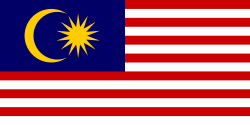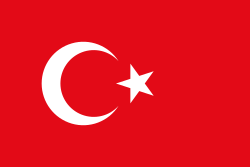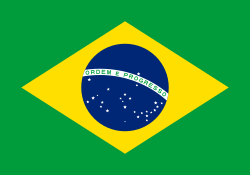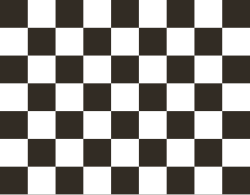Formel 1-VM 2006
| FIA Formula One World Championship 2006 | |
 Starten av Kinas Grand Prix 2006. | |
| Allmän information | |
|---|---|
| Säsongsnummer | 57 |
| Antal race | 18 |
| Start | 12 mars 2006 |
| Slut | 22 oktober 2006 |
| Tävlingschef(er) | |
| Bilar | |
| Motorer | |
| Däckleverantör(er) | |
| Deltagande | |
| Antal förare | 27 (22 per race) |
| Antal team | 11 |
| Mästare | |
| Förarmästerskapet | |
| Konstruktörs- mästerskapet | |
| ◄ 2006 ► | |

Formel 1-VM 2006 hade 18 deltävlingar som kördes under perioden 12 mars-22 oktober. Förarmästerskapet vanns av spanjoren Fernando Alonso och konstruktörsmästerskapet av Renault.
Nyheter
Säsongens nyheter var ett spännande kvalificeringssystem som tillämpar knockout, övergång till V8-motorer samt tillåtna däckbyten igen vilket kräver en annan racingstrategi. Elva stall tävlade, vilket senast hände 2002. Jordan Grand Prix blev MF1 Racing och senare Spyker F1, Minardi övergick i Toro Rosso, Sauber blev Sauber-BMW och sedan tillkom Super Aguri. Frågan var om 2005 års mästare Fernando Alonso skulle kunna försvara sin titel?
Belgiens Grand Prix var inställt på grund av en omfattande ombyggnad av Spa-banan. Däckleverantören Michelin gjorde här sin sista säsong.
Vinnare
- Förare:
 Fernando Alonso, Spanien, Renault
Fernando Alonso, Spanien, Renault - Konstruktör:
 Renault, Frankrike
Renault, Frankrike
Grand Prix-kalender
Team och förare
| Stall/Tillverkare | Nummer | Förare |
|---|---|---|
| Ferrari | 5 | |
| 6 | ||
| Honda | 11 | |
| 12 | ||
| McLaren-Mercedes | 3 | |
| 4 | ||
| Midland-Toyota | 18 | |
| 19 | ||
| Red Bull-Ferrari | 14 | |
| 15 | ||
| Renault | 1 | |
| 2 | ||
| BMW Sauber | 16 | |
| 17 | ||
| Super Aguri-Honda | 22 | |
| 23 | ||
| Toro Rosso-Cosworth | 20 | |
| 21 | ||
| Toyota | 7 | |
| 8 | ||
| Williams-Cosworth | 9 | |
| 10 |
Slutställning
Förare

| Placering | Förare | Konstruktör | Poäng |
|---|---|---|---|
| 1 | Renault | 134 | |
| 2 | Ferrari | 121 | |
| 3 | Ferrari | 80 | |
| 4 | Renault | 72 | |
| 5 | McLaren-Mercedes | 65 | |
| 6 | Honda | 56 | |
| 7 | Honda | 30 | |
| 8 | McLaren-Mercedes | 26 | |
| 9 | BMW | 23 | |
| 10 | Toyota | 20 | |
| 11 | McLaren-Mercedes | 19 | |
| 12 | Toyota | 15 | |
| 13 | Red Bull-Ferrari | 14 | |
| 14 | Williams-Cosworth | 7 | |
| 15 | BMW | 7 | |
| 16 | BMW | 6 | |
| 17 | Williams-Cosworth | 4 | |
| 18 | Red Bull-Ferrari | 2 | |
| 19 | Toro Rosso-Cosworth | 1 |
Konstruktörer
| Placering | Konstruktör | Poäng |
|---|---|---|
| 1 | 206 | |
| 2 | 201 | |
| 3 | 110 | |
| 4 | 86 | |
| 5 | 36 | |
| 6 | 35 | |
| 7 | 16 | |
| 8 | 11 | |
| 9 | 1 | |
| 10 | 0 | |
| = | 0 |
Noter
- ^ Pedro de la Rosa ersatte Juan Pablo Montoya från och med Frankrikes Grand Prix.
- ^ Robert Kubica ersatte Jacques Villeneuve från och med Ungerns Grand Prix.
- ^ Franck Montagny ersatte Yuji Ide från och med Europas Grand Prix.
- ^ Sakon Yamamoto ersatte Franck Montagny från och med Tysklands Grand Prix.
Externa länkar
 Wikimedia Commons har media som rör Formel 1-VM 2006.
Wikimedia Commons har media som rör Formel 1-VM 2006.
Säsonger
| |||||
Media som används på denna webbplats
The Flag of Europe is the flag and emblem of the European Union (EU) and Council of Europe (CoE). It consists of a circle of 12 golden (yellow) stars on a blue background. It was created in 1955 by the CoE and adopted by the EU, then the European Communities, in the 1980s.
The CoE and EU are distinct in membership and nature. The CoE is a 47-member international organisation dealing with human rights and rule of law, while the EU is a quasi-federal union of 27 states focused on economic integration and political cooperation. Today, the flag is mostly associated with the latter.
It was the intention of the CoE that the flag should come to represent Europe as a whole, and since its adoption the membership of the CoE covers nearly the entire continent. This is why the EU adopted the same flag. The flag has been used to represent Europe in sporting events and as a pro-democracy banner outside the Union.Flag of Portugal, created by Columbano Bordalo Pinheiro (1857–1929), officially adopted by Portuguese government in June 30th 1911 (in use since about November 1910). Color shades matching the RGB values officially reccomended here. (PMS values should be used for direct ink or textile; CMYK for 4-color offset printing on paper; this is an image for screen display, RGB should be used.)
Författare/Upphovsman: David Vignoni, Licens: LGPL
Blue single right chevron icon from the Nuvola set. This Nuvola action icon is available in SVG format at File:Nuvola single chevron right.svg.
Författare/Upphovsman: Limemonkey from China, Licens: CC BY 2.0
Start China 2006
Författare/Upphovsman: Odor, Licens: CC BY-SA 3.0
chart of final standings of 2008 Formula One season
Please do not replace the simplified code of this file with a version created with Inkscape or any other vector graphics editor




























